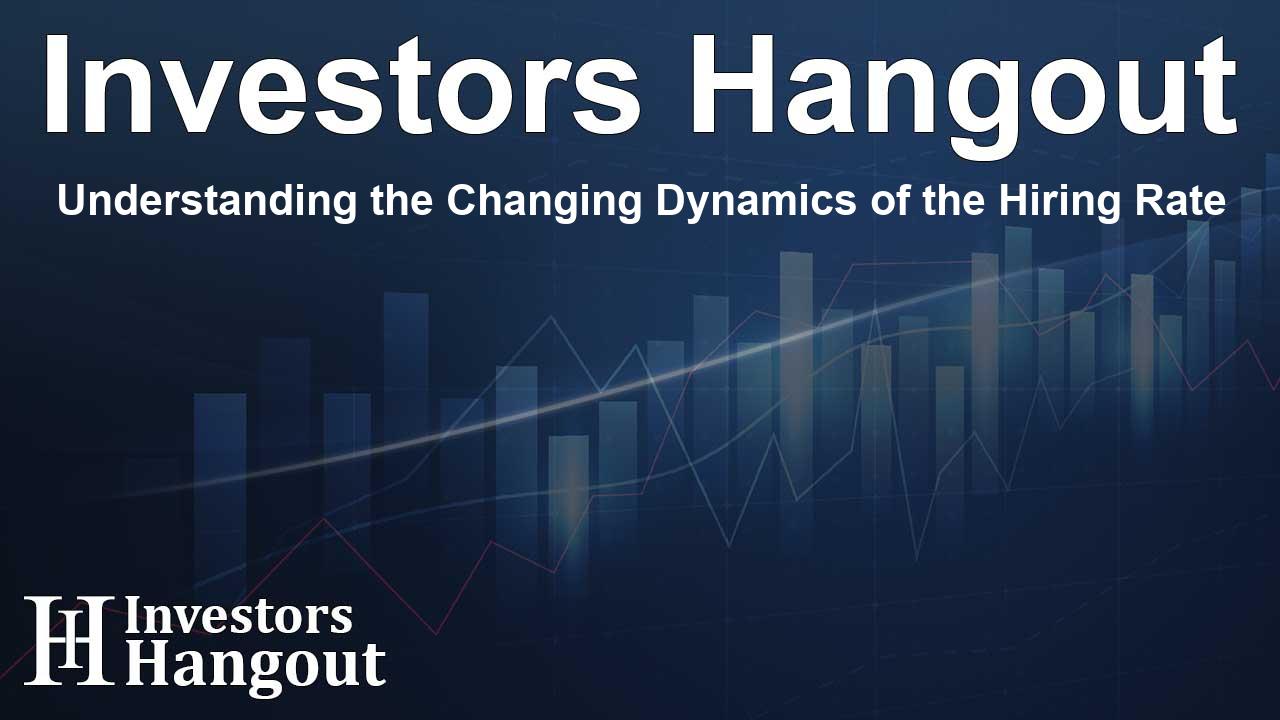Understanding the Changing Dynamics of the Hiring Rate

The Hiring Rate and Its Significance in Today's Economy
As we navigate through the current economic landscape, the labor market remains a focal point for analysts and businesses alike. Recently, the stock market reached staggering heights, with the S&P 500 closing at remarkable numbers. This surge reflects a recovering economy, yet the dynamics within the hiring sector tell a more nuanced story.
The Labor Market Indicators
It's essential to observe labor market indicators closely, as they often foreshadow economic trends. For instance, the latest reports highlighted a significant number of net new jobs created. This indicates that the labor market is not collapsing but rather adjusting. However, a closer look reveals that the pace of job creation has been cooling down in recent months.
Understanding the Hiring Rate
One key metric receiving increased attention is the hiring rate. This rate measures the number of people hired into both new and existing positions. A falling hiring rate, as observed recently, might signal potential issues within the labor market. It’s crucial for businesses to recognize this trend as it could impact their operations moving forward.
The Job Openings and Labor Turnover Survey Insights
The most recent Job Openings and Labor Turnover Survey (JOLTS) revealed that while hiring activity remains strong, the hiring rate has decreased to a rate not seen for some time. Despite employers hiring millions, the rate's decline could suggest future challenges, particularly as economic conditions fluctuate.
The Layoff Context
Interestingly, the layoff rate remains relatively low, indicating that while hiring may be slowing, businesses are still hesitant to let go of their employees en masse. This is a positive sign, showing stability within certain sectors, but companies should remain vigilant and prepared for shifts that might force them to reconsider their staffing levels.
Companies in Transition
As economic conditions evolve, businesses often begin to implement hiring freezes rather than executing layoffs immediately. These measured responses allow companies to navigate uncertainties without drastic impacts on their workforce, reflecting a strategic approach to human resources management.
Staying Prepared for Changes
The insights gathered from JOLTS and other labor market reports indicate that, although we are currently witnessing job growth, we cannot become complacent. Economic conditions can shift quickly, and businesses should be ready to adapt as necessary.
Forward Guidance for Businesses
Companies are advised to analyze their hiring practices closely. Keeping an eye on job openings and labor turnover can provide critical insights into potential future trends in employment and help organizations prepare proactively for any changes in the labor market.
Reviewing Broader Economic Indicators
Despite the changes in hiring and labor turnover rates, other economic indicators remain promising. For example, average hourly earnings have seen modest increases, and the unemployment rate has stabilized around historic lows. Wage growth, while not explosive, indicates that employers are willing to invest in their workforce.
Understanding the Implications of Hiring Trends
As businesses and workers translate these economic signals, it is crucial to understand the implications of hiring trends on overall market stability. The hiring climate can influence consumer confidence, spending habits, and ultimately the trajectory of economic recovery.
Conclusion: Analyzing Economic Conditions
As we reflect on the evolving data around hiring rates and employment dynamics, it becomes evident that while the current indicators may seem positive, vigilance remains key. Economic landscapes can change, and preparedness can mean the difference between successful adaptation and challenges down the road.
Frequently Asked Questions
1. What factors influence hiring rates in the economy?
Hiring rates can be influenced by various factors, including economic growth, business confidence, labor availability, and regulatory changes.
2. How does a low hiring rate affect the economy?
A low hiring rate may indicate a slowdown in economic activity, leading to lower consumer spending, affecting overall economic growth.
3. What measures can businesses take in response to declining hiring rates?
Businesses can freeze hiring, retrain existing employees, and focus on employee retention strategies to navigate declines effectively.
4. How do layoffs impact the labor market?
Layoffs can lead to increased unemployment, decreased consumer spending, and can contribute to a generally pessimistic economic outlook.
5. What should job seekers know about the current labor market?
Job seekers should remain adaptable, considering sectors that are still hiring and understanding the economic trends to identify opportunities efficiently.
About The Author
Contact Lucas Young privately here. Or send an email with ATTN: Lucas Young as the subject to contact@investorshangout.com.
About Investors Hangout
Investors Hangout is a leading online stock forum for financial discussion and learning, offering a wide range of free tools and resources. It draws in traders of all levels, who exchange market knowledge, investigate trading tactics, and keep an eye on industry developments in real time. Featuring financial articles, stock message boards, quotes, charts, company profiles, and live news updates. Through cooperative learning and a wealth of informational resources, it helps users from novices creating their first portfolios to experts honing their techniques. Join Investors Hangout today: https://investorshangout.com/
The content of this article is based on factual, publicly available information and does not represent legal, financial, or investment advice. Investors Hangout does not offer financial advice, and the author is not a licensed financial advisor. Consult a qualified advisor before making any financial or investment decisions based on this article. This article should not be considered advice to purchase, sell, or hold any securities or other investments. If any of the material provided here is inaccurate, please contact us for corrections.
